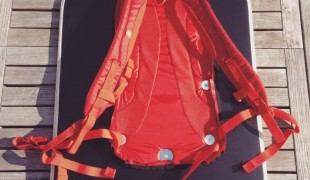- 6876
- 443
- 11
- 16
- 1
- Help Ukraine
About the solution
Nino Rosenberg suffered from polio (a short word for poliomyelitis), an infectious disease caused by a virus called poliovirus. In some cases, the infection can lead to paralysis and permanent disability, as is the case with Nino.
Due to his disability, Nino used mobility scooters, which tend to be very big. Then, one day, while visiting New York, Nino noticed how a taxi driver passing by made him feel discriminated for his huge mobility scooter. ‘Words cannot describe the feeling of being discriminated because you use a mobility scooter. There are very few cities in the world where a taxi driver will stop to pick up a passenger with a mobility scooter, to say nothing of cafes and restaurants that people avoid because there is simply no room for their vehicle”, explained Nino to The Times of Israel.
Mobility scooters are used both by disabled and the elderly to move around in the city and they are quite commonly seen on the streets. However, they present several obstacles and problems, mostly related to size. For example, they are too big to enter most doorways.
So, Nino came up with a solution: he created the Moving Life Atto Freedom Scooter.
When fully open, the scooter looks like other mobility scooters. However, unlike others, the special scooter can be folded into a compact, mini-suitcase-size box, which allows it to fit into a car trunk. It can also be split into 2 parts, making it possible to storage in small spaces like the overhead compartment of a plane.
It is lighter (25 Kg), easy to move around and more stylish than other scooters on the market.
It solves the doorway entrance problem by being narrow enough to fit into most doors, stairs, small lifts, escalators and narrow passages.
It has a maximum speed of 10 Km/h and can travel 30 Km on one battery charge.
He has since created a company called Moving Life, in order to develop the Moving Life Atto Freedom Scooter.
The scooter is currently available for sale in several countries all over the world, including the U.S., Israel, several European countries and Australia. All the dealers and distributors’ websites are available on the official Moving Life website page.
Adapted from: http://bit.ly/2m3Tjlk
More info: https://movinglife.com
https://www.youtube.com/watch?v=9_Zw1Nw0sFs
这些解决方案不应包括使用药物,化学品或生物制品(包括食品);创伤性设备;冒犯性的,商业或内在危险的内容。该解决方案未经医学验证。请谨慎进行!如果您有任何疑问,请咨询健康专家。
DISCLAIMER: This story was written by someone who is not the author of the solution, therefore please be advised that, although it was written with the utmost respect for the innovation and the innovator, there can be some incorrect statements. If you find any errors please contact the patient Innovation team via info@patient-innovation.com
-
-
581
-
0
-
9651

Cane helps blind people recognize faces
COMMUNICATION: Communicating, whether by speaking, listening, or other means
WALKING WITH A WALKING AID: Walking with a walking aid
Urban exploration
Traveling
Social interaction
Blindness
Assistive Daily Life Device (to help ADL)
Walking Aid (wheelchair/walker/crutches)
Vision problems
Sensitivity to light or sound
Restoring mobility
Promoting self-management
Managing Neurological Disorders
Promoting inclusivity and social integration
Maintaining Balance and Mobility
Improving Speech and Communication
Preventing (Vaccination, Protection, Falls, Research/Mapping)
Neurology
Ophthalmology
United Kingdom
-
-
-
247
-
0
-
2719

Collaborator James Leckey makes equipment to improve the quality of life and social inclusion of children with special needs
MOVING IN A WHEELCHAIR: Moving using a wheelchair.
BODY BALANCE: Maintaining body balance
STANDING UP: Standing up from a seated position
Playing
Neuromuscular Disorders
Assistive Daily Life Device (to help ADL)
Walking Aid (wheelchair/walker/crutches)
Assistive Technology access
5 Senses support devices: (glasses, hearing aids, headphones...)
Restoring mobility
Promoting self-management
Managing Neurological Disorders
Promoting inclusivity and social integration
Maintaining Balance and Mobility
Raise awareness
General and Family Medicine
Neurology
Orthopedics
Pediatrics
Physical Medicine and Rehabilitation
United States
-
-
-
675
-
0
-
8606

Father builds changing table for his son
WALKING: Walking
Body-Worn solutions (Clothing, accessories, shoes, sensors...)
Assistive Daily Life Device (to help ADL)
Recovering cognitive function
Promoting self-management
Preserving Organ Function
Managing Neurological Disorders
Promoting inclusivity and social integration
Maintaining Balance and Mobility
Preventing (Vaccination, Protection, Falls, Research/Mapping)
Neurology
Pediatrics
Mobility issues
Pediatric Innovations
Mental health support
Solutions for Disabled people
Belgium
-
 zh
zh
lester4620 • Tue, 09/10/2019 - 01:33